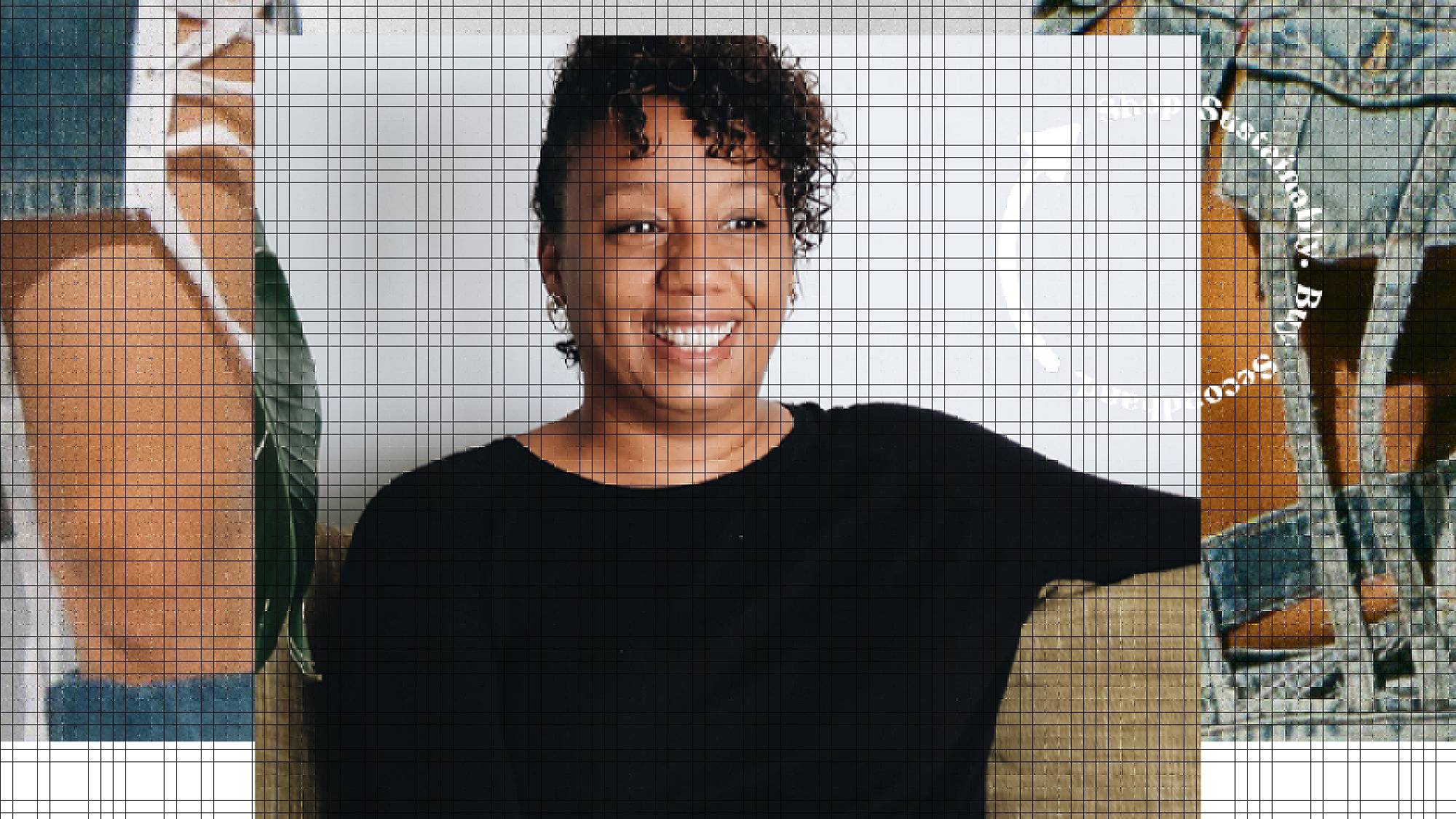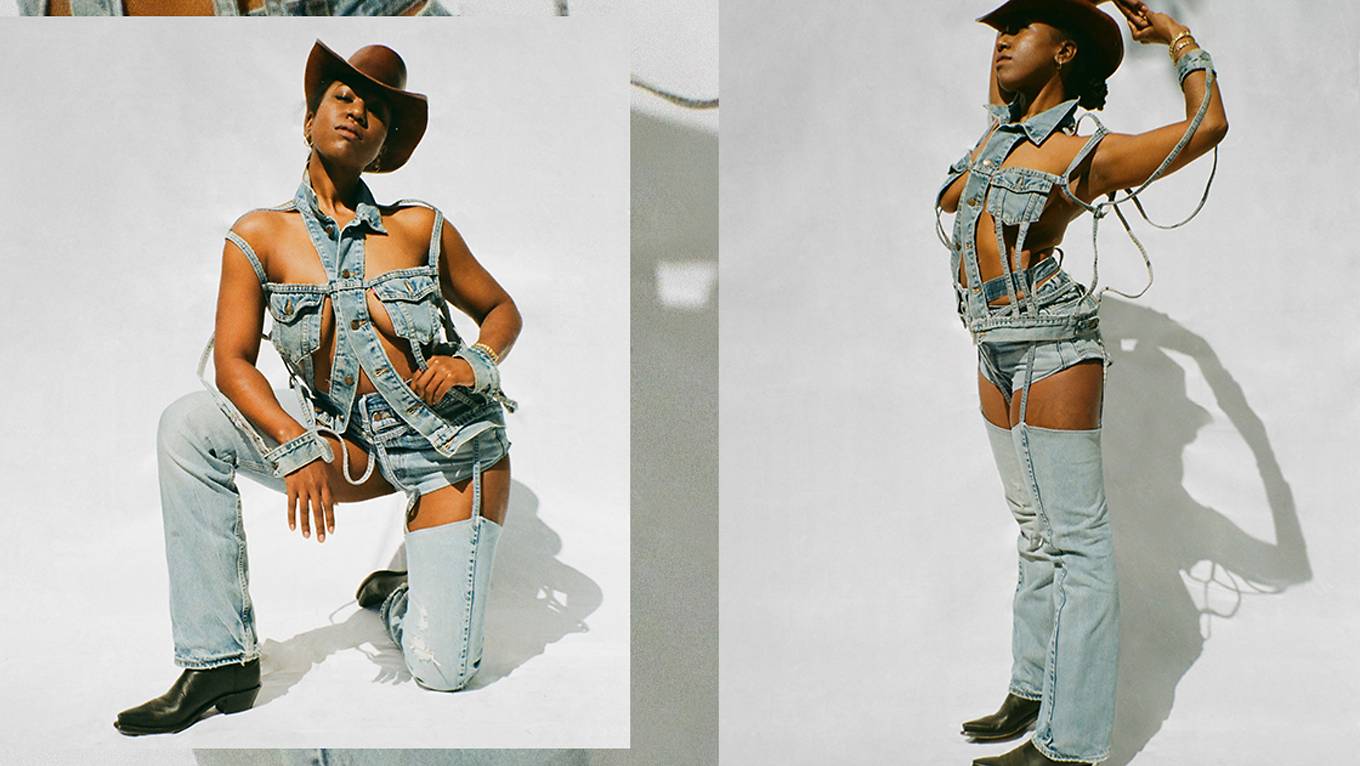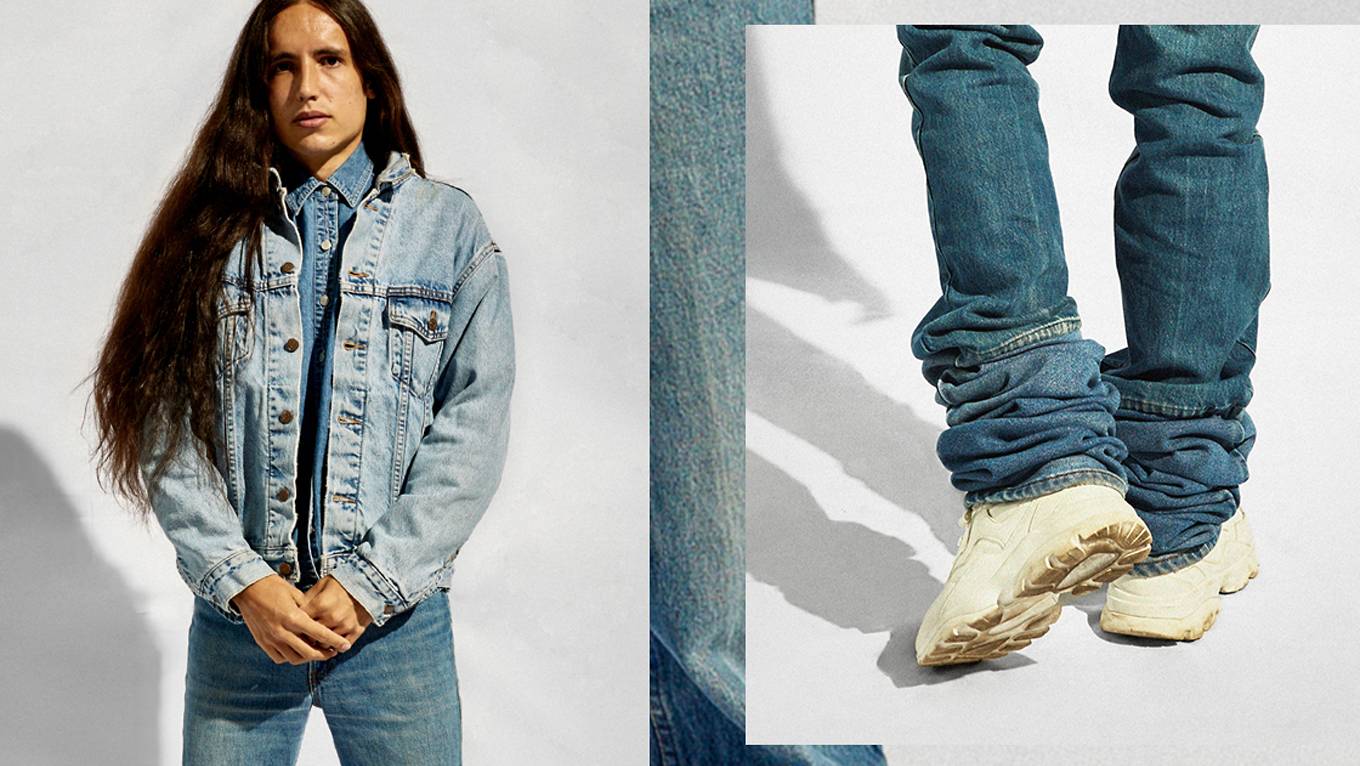RECONSTRUCTING DENIM AND SOLVING THE GARMENT WASTE PROBLEM
Sustainability /
December 2020

Solange Parris has the kind of resume about which most creatives can only dream. With degrees in both illustration and fashion design, the latter of which coming summa cum laude from the prestigious Parsons School of Design, Solange has forged a path all her own, creating her own unique specialization in reconstructing garments. Today, the Trinidadian-born designer, maker, and creator can take even the most well-loved pieces and transform them into something brand-new with just a pair of scissors (and maybe a sewing machine, too). It's an art form she's most recently showcased with denim, reimagining previously-worn jeans into high-octane looks fit for any runway.
"Solange and I are kindred spirits, and connected immediately in our mutual passion for low-impact fashion," says stylist and consultant Rachael Wang, who collaborated with Solange to photograph Dominique Drakeford and Whitney McGuire, Xiuhtezcatl, and Xiye Bastida for Levi's® SecondHand. "Her impressive skill set, ranging from illustration to technical design and unique perspective on creating, made her my first choice collaborator." This skill set is one Solange has honed over time, as she's learned to intertwine her passions for sustainability and creativity — and as said passions have become even more personal. Here, she speaks to us about her journey from novice thrifter to circular fashion advocate, and how we can get started reconstructing our own denim at home, too.
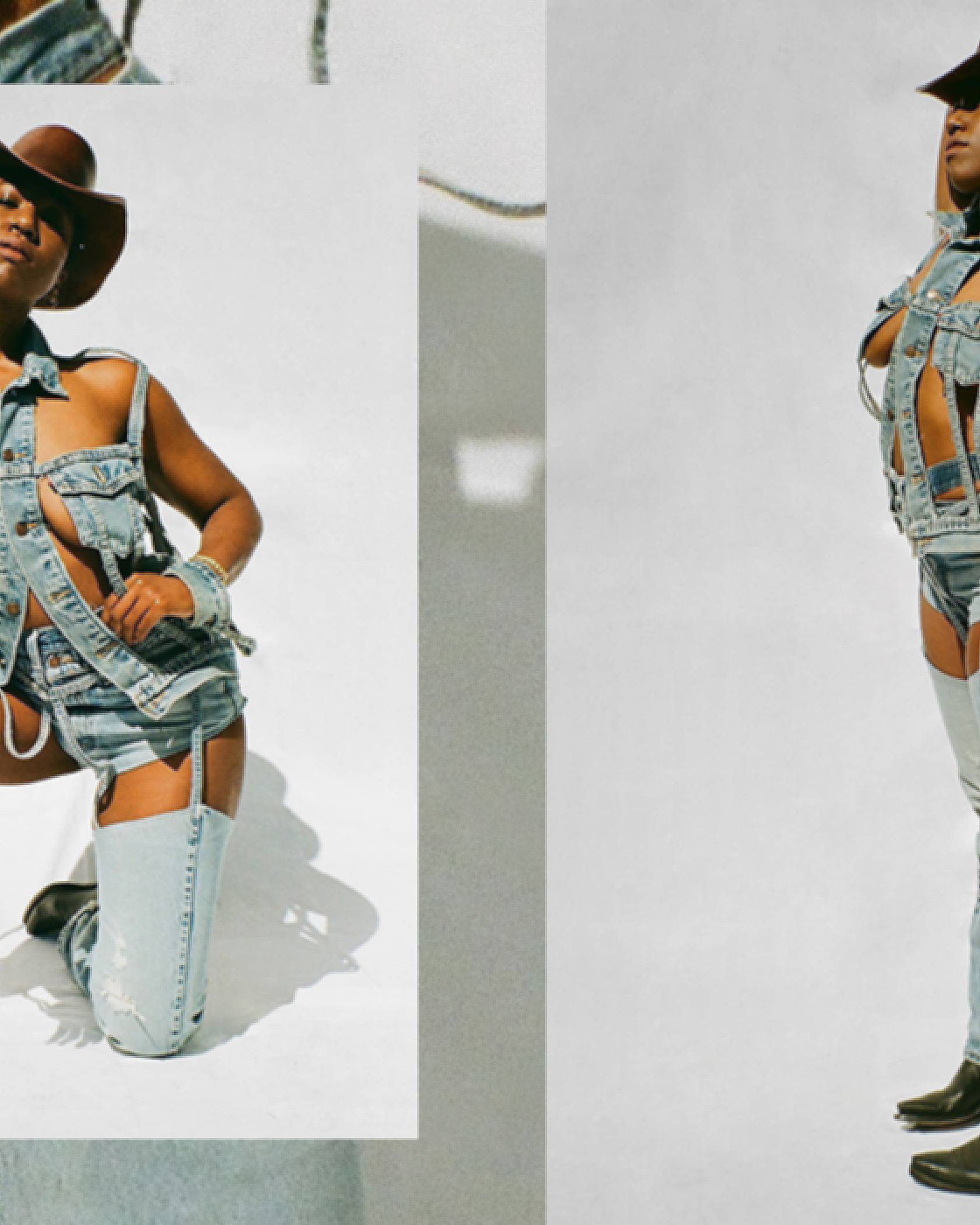
Were you always interested in design?
I've always been a creative. I've been drawing as long as I can remember. My mom used to have an interior design business, and I would spend hours playing with fabrics and the scraps that fell on the floor. I especially loved experimenting with some of them and making creations for my dolls, and for our dogs. That fueled my creativity as a young person. Coming from a small island, creativity wasn't very fostered. It wasn’t necessarily thought of as a lucrative career. But my mom definitely had the foresight and encouraged me to apply to art schools, and that's how I came to my first degree, illustration.
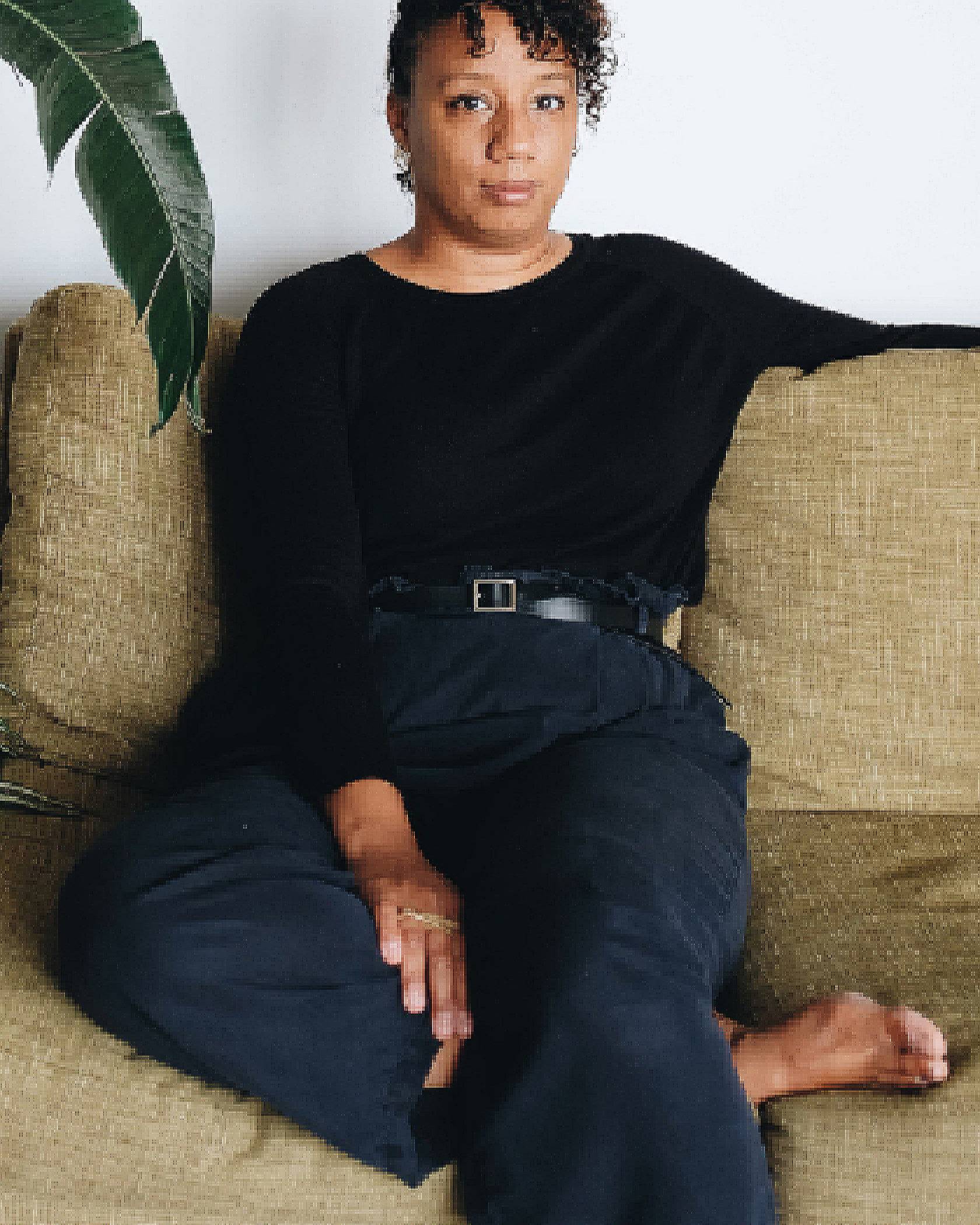
You hold degrees in both illustration and fashion design. How did your formal education inform your signature multi-dimensional design approach?
It does give me a unique perspective, having both drawing and fashion under my belt. It gives me this unique perspective about form and function, and as I continue to practice, I'm able to easily visualize my drawings in the 3D representation. I'm still a student. I'm still learning things, like the 3D design programs that can definitely reduce my personal waste in my personal design process.
In a similar vein, how does your Trinidadian heritage and background influence your work today?
Trinidad and Tobago runs deep, deep in my veins, and on my back in the form of a tattoo. We’re just naturally a melting pot of creative and resourceful people. From a young age, I was involved in Carnival celebrations, and I loved the behind-the-scenes of Carnival, the making of the costumes and the Mas. Even at that point, there were recycling programs in Carnivals that had more to do with cost conservation than eco-consciousness. That sort of creativity definitely shines through in my work.
My mom and my aunt were very responsible for my love of sewing. We always made outfits together. We have pictures of our matching outfits, and I always relish the opportunity to fabric shop with them or to upcycle things with them. They're some of my best memories.
You've voiced concern with the staggering waste problem in the garment industry. When did your interest in sustainability begin, and how did you take this passion to the next level in the craft?
When I came out of college in my twenties, like everybody else in a first job not having much cash flow, I was heavily into fast fashion. I was expressing myself the best way I knew how at the time. Secondhand shopping was sort of frowned upon. But when I arrived in New York City, a good friend introduced me to the thrift shops here. And I can say I never looked back.
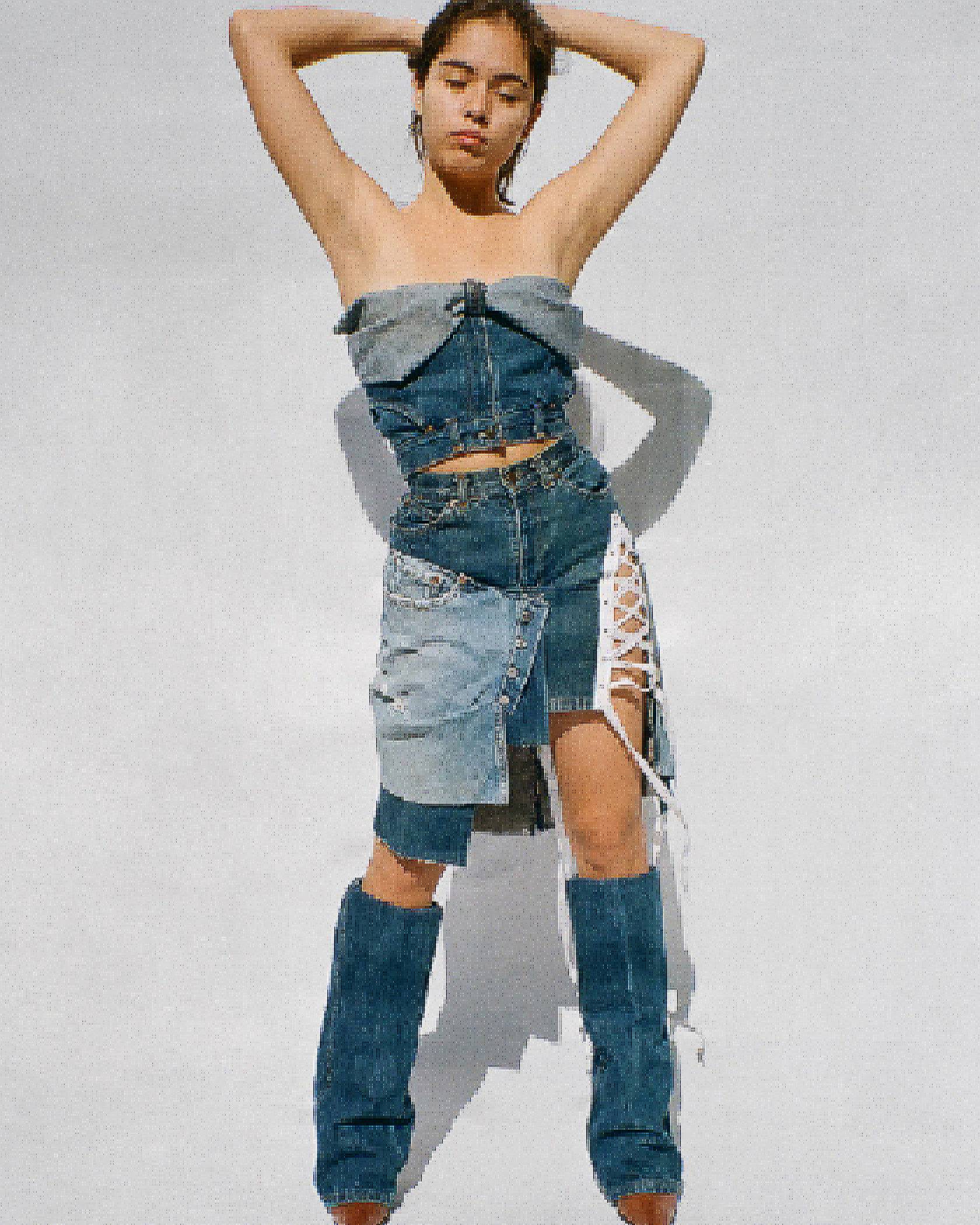
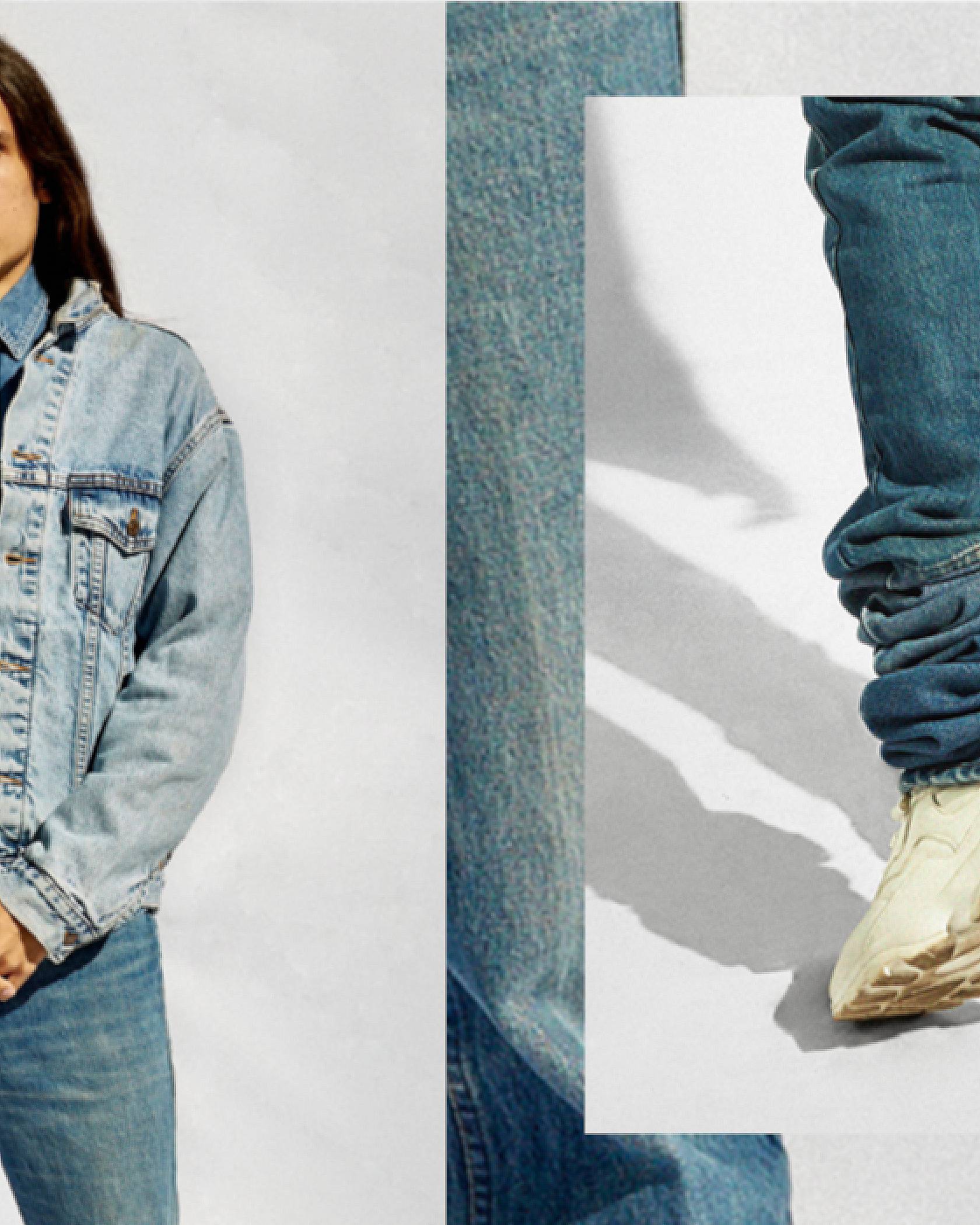
The customized pieces you created with Levi's SecondHand are remarkable. What about denim inspires you, on both the design and sustainability fronts?
Thank you, first of all. I'm really, really flattered that everybody was so delighted by the pieces, because I definitely had fun making them. Denim is just a versatile fabric. It can be drapey. It can be lightweight. It can be rugged. It can be structured. It's built to last, to stand the test of time. That’s very, very inspiring to me. Also on a cultural level, it can mean so many different things to you. You can have a very emotional connection to a piece of denim. And that's why I believe you should choose denim to stay with you for as long as you can, to be reworked and restyled.
Over 8% of total global greenhouse gas emissions are produced by the fashion industry, according to a 2018 study from sustainability consultancy Quantis. How can consumers hold these fashion companies accountable for their policies, while also taking steps to become more sustainable in their day-to-day lives?
We're in this moment in time where we can't deny climate change. It's here. I've seen this year bring on a collective consciousness, and we’ve continued to leverage our power to make eco-friendly choices, to hold these companies accountable by saying, "No, we won't spend money on your product if you're not being transparent.” But that's only a drop in the bucket that represents just a minuscule percentage of the change we need.
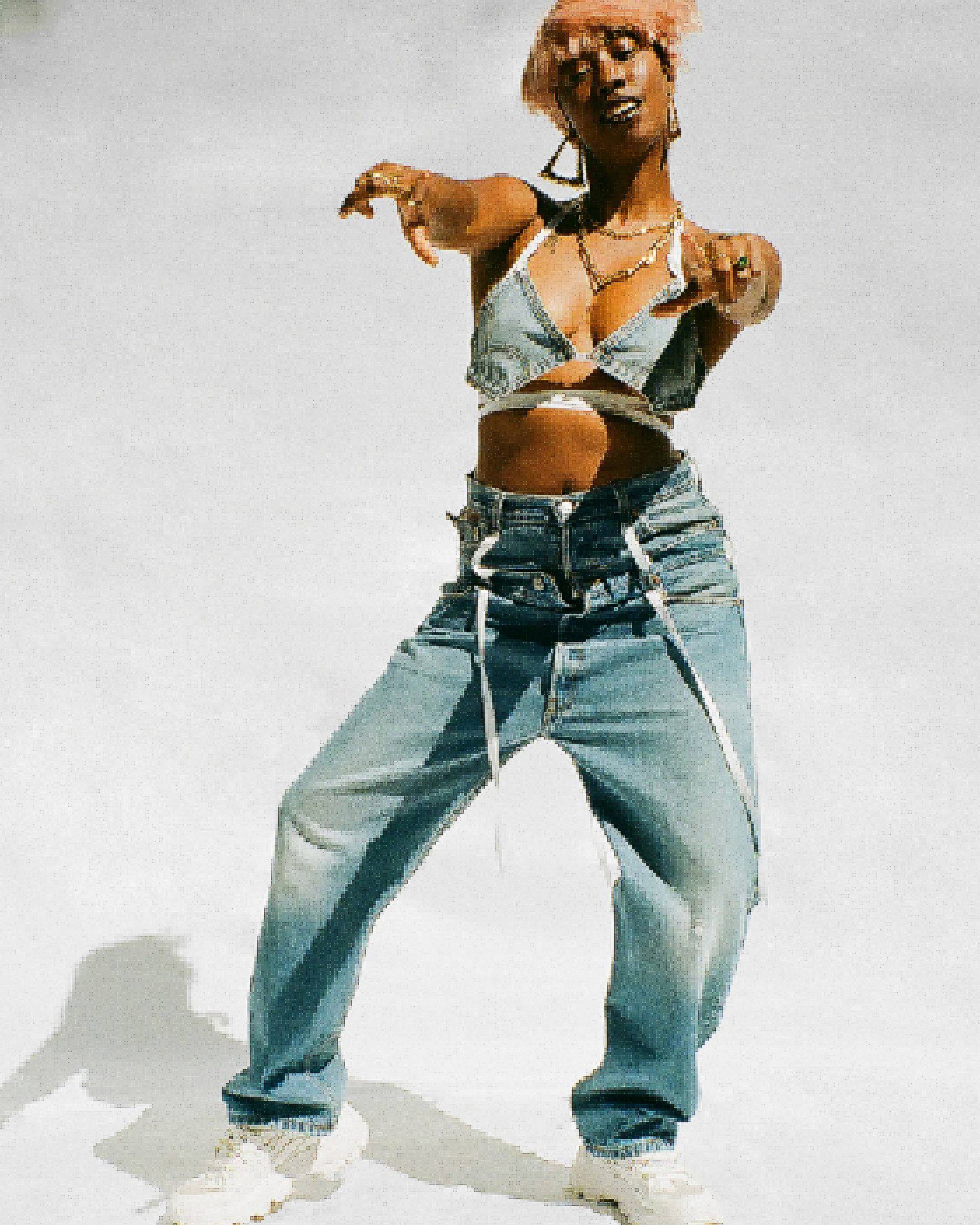
We need true systemic change. We need to spend less time researching green, non-toxic products and more time putting our efforts and our money behind lobbying the government to ban those toxins, or donating to organizations that endeavor to protect our water sources from agricultural run-off. I feel these bigger actions are the ones that enact real environmental change, and the bigger companies will have to follow because it will be in our legislation, as opposed to just leveraging individual power. We have to make it a group effort.
Within sustainability, there's a growing focus on intersectional environmentalism — that climate justice, racial justice, and social justice are all intertwined. How can eco-activists of all levels advocate for sustainability through an intersectional lens?
I talked earlier about being a student myself. You have to read up as much as you can on intersectional environmentalism. But you can't just leave it to the consumer to educate themselves. It has to also be on the industry side, too. You have to get involved in your community. You have to talk to your peers. You have to interact and engage with as many diverse groups as you can to understand different world views and have meaningful conversations about how we can move forward collectively, with everyone's interests at heart. True equity is needed in this realm. The fashion industry as a whole must adopt these practices to give everybody a seat at the table, to listen and to make sure all voices are heard with the same gravitas.
Levi's SecondHand is a great example of a brand making resale or recommerce more accessible. Why do you think secondhand is so important on a mass level, and how can interested shoppers get involved to shift their buying habits?
Big corporations offering secondhand garments is such a pivotal start in making this retail industry a more circular system. I have hope that encouraging the consumer to change their habits on a mass level will translate to Levi's being able to reduce the amount of new denim they produce — which I know that, coupled with their own environmentally-conscious processes, will further reduce their carbon footprint.
This is big. It's not us going on eBay and Etsy and finding smaller brands. That's good, too. But Levi’s taking a step forward and showing that they can be responsible on a mass level will shift their consumer to think the same way.
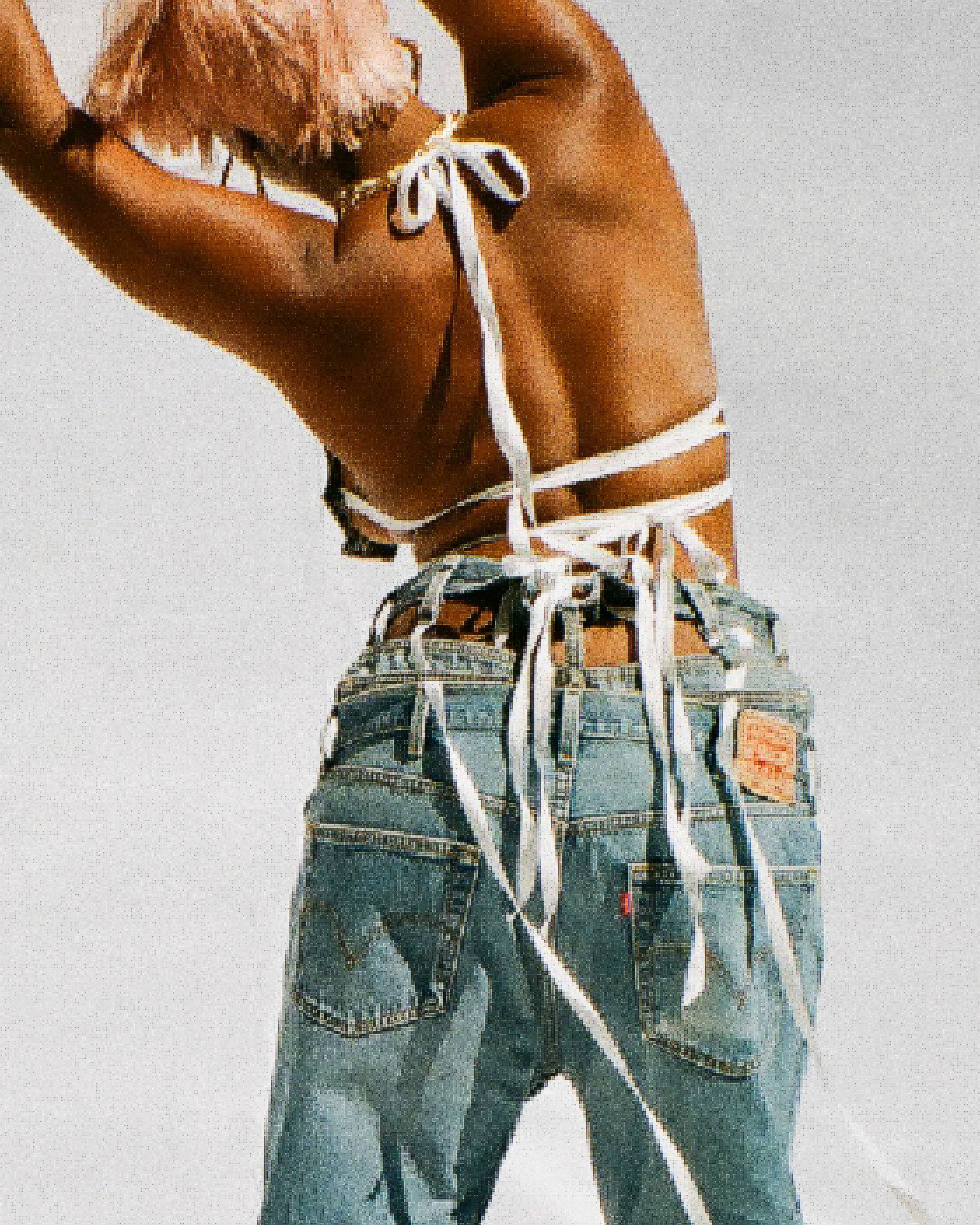
What advice do you have for consumers looking to attempt to reconstruct their own garments, but who don't know where to start?
The easiest way to begin reconstructing or deconstructing anything is a good pair of scissors. The easiest project you can do is a pair of cut-off jeans. And you can do it at any length and crop it at any height. But if they're looking for the next step beyond the cut-off, because I'm sure everybody has done a pair of cut-offs, that’s probably making a denim skirt from a pair of jeans. All you have to do is split up the center with a little bit of sewing. Anybody can learn to do that. If anybody is looking to do an elaborate project, I'm also available for customization. You can send me old denim items, and I can transform them or teach you how to transform them.
